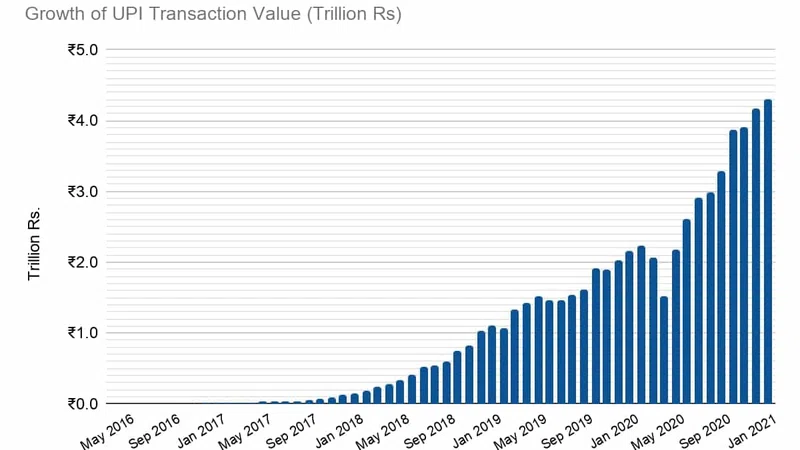Building and shaping a successful fintech should hinge on two things: customer-led proposition, and a laser-sharp focus on the bottom line from inception to scale. So why are so many well-funded neobanks still languishing unprofitably when currently, from a technological perspective, it’s never been easier—or possibly cheaper—to bring an fintech proposition to market?
Vacuumlabs, the global provider of full-stack fintech solutions, and strategic management consultants Manifesto Growth Architects recently hosted a market-and delivery-focused virtual event, Banking 2021, that brought together key industry players to speak to critical challenges across the banking industry’s new competitive landscape.
Thought Machine, creator of the core banking platform Vault, highlighted the power, lower costs and agility that building your offering around a cloud native solution will deliver, while Paytech Pioneer Global Processing Services (GPS) unpicked the clarity of purpose underpinning successful fintech propositions.
The result was a wealth of market-proven guidance, detailing strategies for how best to launch and grow profitable fintechs. Whether you’re deep into the fintech space or a new entrant, here are our top five takeaways from the Banking 2021 panel.
Have a clearly defined proposition
To be or not to be a bank? That is the question. And it leads on to others: will I need a banking license for my business? Or can I partner with another license holder? Some profitable market niches can fall outside of the regulatory regime. It’s very important here to define which geographies you want to operate in; it’s tricky to pivot towards an international operation if your initial proposition solely relied on a domestic focus.
Different jurisdictions have very different regulatory regimes and in some markets, such as Malaysia and the Philippines, the costs and capital adequacy requirements are significantly lower for digital banking in comparison with other regional markets such Singapore and Hong Kong. These cost advantages are now driving some very rapid-paced growth in creating new digital banks in these lower-cost markets.
Clarity of purpose is a fintech cornerstone for Neil Harris, Group CCO of GPS. He stresses that authenticity is paramount in defining your business proposition; this requires a deep-level understanding of your target end-users, as well as involving them in your MVP before launching new services—especially if these center on new payment models.
It’s a sentiment echoed by strategic adviser Faith Reynolds: “It’s about being really clear from the start what your purpose is and what it is you are trying to deliver for whom. Prioritize consumer outcomes: How does our product make someone better off and how are we increasing their financial well-being.”
This agility of response towards positive consumer outcomes was brought into sharp relief in April 2020 by Starling Bank who launched its Connected Debit Card for customers in vulnerable situations in the face of the COVID-19 pandemic.
Prioritize recurring revenue streams—pivot from interest income to service revenues
Focusing on the bottom line is essential: Manifesto Growth Architects‘ research shows that many are struggling to break even. In light of the current funding squeeze induced by low interest rates and the pandemic, fintechs need to focus on profitability. Joanna Levesque, who heads up Manifesto Growth Architects’’ financial services practice, stresses that challengers looking to scale should seek to ‘move up the curve’ in terms of service revenues: non-interest income and other fees and commissions. Of Starling, Revolut and Monzo, Starling has now been the first to report a profit; and its 2020 financial results already show a near 50/50 split between interest and non-interest income.
Niche is the new mainstream
The panel highlighted that a great deal of money can be eaten up in building a digital bank’s ‘community’ from scratch, as evidenced by the US$497m of funding received to date by Monzo. It can be a much smarter proposition to tap into a community that already exists. Until recently, some digital banks were targeting customers at a discount, for example via referrals, rather than seeking to acquire customers profitably—and that’s not a sustainable business model.
Given that it’s now low-cost to acquire customer data, successful fintechs will harness customer-focused metrics to understand how customers are behaving and prioritize content quality to drive engagement and community to increase return visits. Joanna says, ‘There's the opportunity now to deliver personalized and real-time experience management, allowing customers to have very fluid personalized journeys offering contextual triggers at the right time, so that you can really respond to their behavior. This customer data helps you to drive targeted proposition development and you can be much more focused around which customers you want and what propositions and needs you're really addressing.’
This mindset makes it easier to target services towards specific underserved segments and defining these propositions allows you to be much faster to market; and as an example, Vacuumlabs has worked with Daylight, a US bank specifically targeting the LGBT+ community.
Never forget that with your customer community, that trust is paramount, and always deliver on the customer promise.
Use cloud technology to leverage the fintech ecosystem…
…and start leveraging cloud-native technology now. Nigel Sirett, Head of Digital Banking at Vacuumlabs, explains it clearly: if you get cloud technology right and deliver wonderful experiences for your customer, then you’ll significantly reduce the cost of serving them. Cloud technology is not new, but it’s now come of age for financial services.
Incumbents are often shackled by complex, monolithic, product-centric legacy systems and merely bringing these existing products and processes to the cloud won’t drive profitable customer-centric services. To achieve this aim you need solutions that are architected for the cloud from day one. Nigel says, “The great news with cloud-native is you're then not locked into vendors on their 10-year cycle, if you want to rip out the KYC service because there's something better or more applicable to your solution now available in the market you can flip these things? In and out incredibly quickly today.”
Travers Clarke-Walker, Chief Commercial Officer at Thought Machine emphasizes that cloud infrastructure in its own right doesn’t change the proposition you build; it’s the applications that you run on it that do: “If you can continually develop a product you can then build in additional flexibilities and understand customer behavior. You can then adapt that product in real-time in front of the customer, and that is an enormous benefit.
“There’s also the benefit of horizontal scalability and the cost efficiencies of cloud infrastructure and you can combine these elements to result in a faster pace of change, change that is unique and relevant to your customer base.”
That scalability is enhanced by using open APIs to deliver the digital banking proposition you want. Nigel says, “In the API-driven world, it’s never been easier for a bank to spin up a new tech stack to support new services and / or new customer segments. API-driven means being customer-centric and services-centric, not product-centric. You can pull those things which are relevant to your customers and combine these with more traditional financial products. This significantly drives down the cost to serve each customer and it’s now very easy to get started and companies like Vacuumlabs can package and assemble this for you into solutions.”
Leveraging the fintech ecosystem means you don’t have to rebuild things that have already been built by others. You can channel your energy into focusing on those areas of your proposition that speak specifically to your client base or target demographic and where you are seeking to differentiate yourself in the marketplace. And, if you’re a non-bank, all the heavy lifting has already been done for you. All the connectivity for the global infrastructure is available via Banking as a Service (BaaS) providers.
The primary tech build messages, then, are plain: don’t build on an old chassis, start with a cloud native approach, architect your solutions for the future and focus on your differentiators. There is no value to be gained from commoditized services, so plug these in from elsewhere.
Don’t go it alone—Outsource
Experience has shown that successful fintechs blossom through trusted and proven partnerships. Outsourcing enables you to retain the unicorn’s edge; attempting to do everything in-house will likely burn through a lot of cash and jeopardize future success.
Monzo's decision to follow through on its investor promise and begin to in-source during scale up has brought challenges in terms of cost and service, which had a direct negative impact on the company’s valuation. Monzo is valued at US$1.6bn on the back of total capital raised of US$497m; Revolut’s valuation is US$5.5bn on the back of US$918m in funding. This equates to a valuation of US$3.2 per funding dollar for Monzo vs. US$6 for Revolut.
There are players who are specifically built to assist fintech launches—so leverage the skills that are out there. Neil is clear on this matter: “My advice is to choose your partners wisely and insist upon reference points. Choose partners that are specific to your proposition and outsource. Outsourcing has significant advantages. You're not just buying the service, you're buying the people and the expertise that can help accelerate your business growth, so you have fewer distractions and keep on track. You’ll be at a higher bar for regulatory compliance and you can remain nimble whilst you focus on your proposition and delivering value to your customers.”
Bringing it all together
Software partners are often approached by would-be market entrants and asked to replicate the superficial branding characteristics of a specific unicorn. A tech partner such as Vacuumlabs would seek to dive in deep with the customer, and help them first of all define their market niche and develop that product, as Nigel explains.
“What we try and do to encourage people from the start is to assess your regulatory requirements, as there is still a regulatory journey; whether you get your own license or partner with an existing license provider for your services. And, in parallel, we work with you on proposition development, identifying the key technologies you're going to need, and then these two dovetails: by the time you're regulatory approved you've got the first versions of the tech product built and you're in the market.”
Panel chair Helene Panzarino summarized the way forward by emphasizing that the successful fintechs of the future will be built around data insight-led communities served by authentic personalized propositions. Here, the driving seat will be ceded to the niche customer and this market shift will be enabled by leveraging the fintech ecosystem.
This is now fintech’s opportunity to transition the 2021-and-beyond preferred business model, to align with state-of-the art cloud technology.
Did you miss Banking 2021 virtual event or want to renew your memories? Watch it now here!
Five takeaways from Banking 2021: How to build profitable digital banking services
• Feb. 18, 2021










